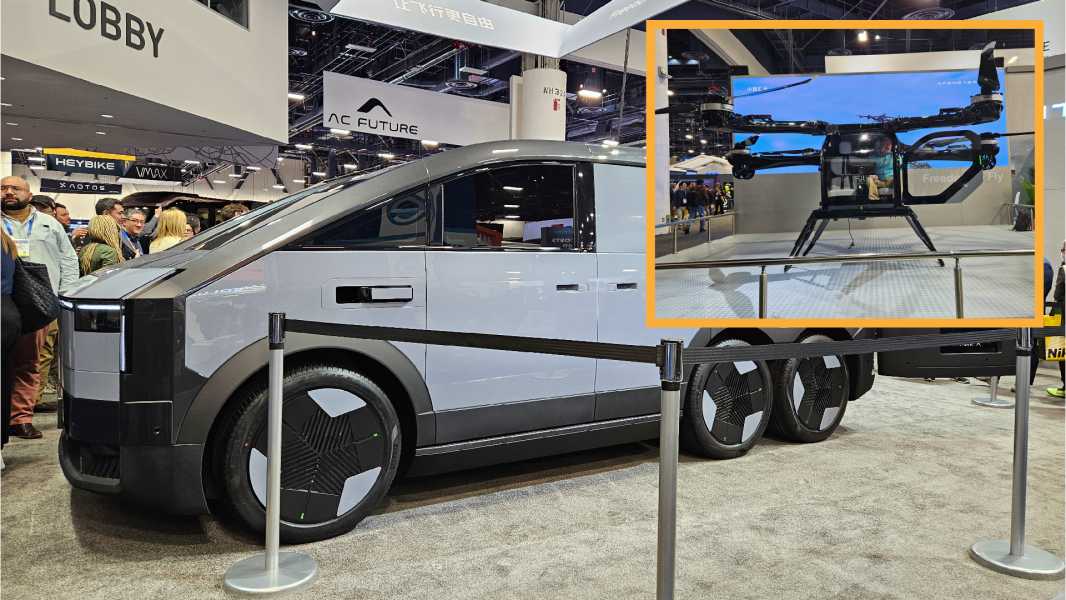
The transition of the eVTOL from inside the vehicle to outside the vehicle is accomplished using eight control modules and 14 actuators. (Image credit: Keumars Afifi-Sabet)
LAS VEGAS — Engineers in China have demonstrated an unusual prototype of a flying car that can be connected to a ground vehicle reminiscent of Tesla's controversial Cybertruck, essentially turning it into a mobile aircraft carrier.
The aircraft is an electric vertical takeoff and landing (eVTOL) vehicle, meaning it requires engines and propellers spread across the width of the airframe to fly – a system known as distributed electric propulsion.
Those motors and propellers are housed in a “mothership” reminiscent of the Cybertruck, which Xpeng Aeroht (the company behind the device) has described as the first such vehicle thanks to its 800-volt motor and integrated platform capable of extending its range to more than 620 miles (1,000 kilometers).
The eVTOL flying car itself has six rotors and is made of carbon fiber. It can carry two passengers and offers a 270-degree panoramic view for those inside. The car was under development as early as November 2024, but the company unveiled a fully completed prototype in Las Vegas at CES 2025.
The air component can be controlled manually or autonomously, Live Science reported, with the pilot given full control if needed. Whether the vehicle is being flown by a human or autonomously, the flight control and navigation system ensures the air taxi is stable and safe at all times.
The transition of an eVTOL from inside the vehicle to outside relies on eight control modules and 14 actuators — machines that create force or torque when current passes through them. When an eVTOL flying vehicle is detached from its ground component, its rotors extend out from the center of the device. The rotors then begin to spin, and the eVTOL vehicle begins to fly.
In November, scientists completed the first public flight of a component of the flying car, demonstrating the complete separation of the ground and air modules and their subsequent reassembly.
The plant tasked with producing the “land-based aircraft carrier” is expected to reach an annual capacity of 10,000 units, with production of the air module set to begin in the third quarter of 2025 and deliveries to begin in 2026. Company officials expect the vehicle to be in demand by travelers looking to explore new territories.

Keumars Afifi-SabetSocial Links NavigationChannel Editor, Technologies
Kumars is the Technology Editor at Live Science. He has written for a variety of publications including ITPro, The Week Digital, ComputerActive, The Independent, The Observer, Metro and TechRadar Pro. He has been working in technology journalism for over five years, previously serving as Features Editor at ITPro. He is a qualified NCTJ journalist and holds a degree in Biomedical Science from Queen Mary, University of London. He is also a registered Chartered Manager with the Chartered Management Institute (CMI), achieving his Level 3 Group Leader qualification with Distinction in 2023.
Sourse: www.livescience.com





